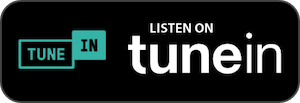
In this episode…
Bane Hunter is the CEO of GetSwift, an all-in-one last mile delivery service that has revolutionized the way large and small companies manage the challenges of delivery and fulfillment. But he’s much more than that. His experience spans multiple sectors and includes leadership roles at MTV, Conde Nast, and Annie. But more than his stellar resume. Bane is a values-driven leader who has the courage of his convictions and will take the sometimes-difficult steps to protect his people and his personal, as well as professional values. In fact, he has gone toe to toe with an entire country to do that. If that doesn’t make you a purpose champion, I don’t know what does.
Episode Transcript
Fran Biderman-Gross
Hi, I’m Fran Biderman-Gross, CEO of Advantages, an award-winning full service creative agency. And I’m here to discuss how the greatest leaders activate purpose. They uncover its roots, unlock its potential, and infuse it into everything they do to reimagine legacy, create winning cultures and achieve sustainable growth. Listen in to learn insightful ways to overcome the real challenges countless leaders face every day.
Bane Hunter is the CEO of GetSwift, an all-in-one last mile delivery service that has revolutionized the way large and small companies manage the challenges of delivery and fulfillment. But he’s much more than that. His experience spans multiple sectors and includes leadership roles at MTV, Conde Nast, and Annie. But more than his stellar resume. Bane is a values-driven leader who has the courage of his convictions and will take the sometimes-difficult steps to protect his people and his personal, as well as professional values. In fact, he has gone toe to toe with an entire country to do that. If that doesn’t make you a purpose champion, I don’t know what does.
Bain welcome to Drive Profit with Purpose. Many people think that with all you’ve been through, you’re probably a bit jaded. Is that true?
When to take things seriously, when to relax
Bane Hunter
You’ll find that I’m the sort of executive that, you’re absolutely right, is purpose driven. But I don’t take myself too seriously. By the way, there is a time and place to be serious. If you take yourself too seriously, my inherent philosophy is you’re either hiding something or you’re insecure yourself. You’re not empowering others. There’s the old adage, where through humor, through a sense of relief, ease and comfort, you’ll accomplish a lot more than through being tense and uncomfortable. So, purpose, good leaders, know when to turn on the sense of humor, and 90% of the time you’ll accomplish a lot more. And the 10% is what I call inherent steel. A titanium focus that you need to have to be able to accomplish it. You could be thrust into the fire, you could be hammered, you can be experiencing all sorts of things, but you still have to have the resilience to either bend with the blows.
My personal philosophy is that those who go around claiming that they don’t feel things are going to end up like a rock next to an ocean, I don’t care what the rock is, after a while it will be eroded. Versus a willow tree standing there all alone on an open field, the wind is blowing, they’ll be resilient to go back and forth, but still remain standing. Nobody will give it a second glance. So again, it all comes down to what kind of leader you want to have, what’s the sort of message you want to communicate, I think people are driven by a number of purposes and desires. One, I think we’re all striving to achieve something better, get to some objective, some purpose, some destination, right? Each of us has a slightly different one. Second one, I think, regardless of what people say, they will try to reach that destination by not suffering if they can help it. So reaching a destination that you can reach quicker, easier, better, faster, fantastic, everybody’s going to go. Then the third aspect of that, which is perhaps a smaller minority, is the minority that actually thrives on the competition, you’ll see the great athletes of the world, (but it’s not even just great athletes, I’m using athletes because it’s easier to understand it’s much more physical) the great poets of the world, the great novelists, the great scientists, none of them, if you look at it historically had an easy time reaching that level of either greatness or purpose, without a level of pain, misunderstanding, focus, dedication, and what have you? What is the criteria you’re trying to reach? What is that step on that pyramid that you’re trying to reach? What are you willing to do for it? Or are you willing to bring along with you, and what’s the price that you’re willing to pay? Ultimately, that’s my personal philosophy and I could be completely wrong. And you know, but flipside so far, I’m still standing.
Fran
I’m curious, like, I’m sure there’s a bunch of stories in there that kind of back, but that’s what everybody wants, right? They want they want to hear the juicy, not long story, but the short story that has, I wouldn’t say the fairytale ending, but the great lesson – like where’s the nugget? And where’s the lesson?
Bane
Let me throw let me throw something at you. It’s a challenge that I throw to anybody who wants to be my direct report. And I turn to them and (one of the objectives that I focus on is creating the next generation of leaders) I’ll throw him a riddle. Right, because I think riddles are something you can’t really learn from books. I think one of the things that CEOs tend to forget is that there is trained knowledge, and then there’s knowledge that you can apply. And you’re talking about in terms of how do you apply it? I turn to them and say, if you had a choice, would you rather be seen or be utilized as a shield or as a sword? The question there, would you rather be a shield for your organization, for your staff at the top? Or would you rather be a sword? And, you know, you’ll get all sorts of answers. The truth is, there is no wrong answer. This is the amazing part. There’s no wrong answer. But there is a right answer. The right answer is you have to be both.
Fran
That’s okay. My husband will confirm that I’m usually right.
The Importance of Resilience
Bane
But here’s the next level, because there’s always the next level in terms of the challenge then becomes a choosing when do you want to be a shield? When do you want to be a sword? There’s a time and place for everything. And how do you translate that into profit? And where does the resilience come in? So if you want me to give you a quick story of a few in case you haven’t followed us. So here’s the interesting story. Five, six years ago, I had a really nice corporate career, doing fantastically well, corner office, you name it. Look in the dictionary under “American dream”, I could have put my job in there. I worked for some amazing companies, and amazing brands, that to this day, are near and dear to my heart. Viacom, MTV, Conde Nast, A&E just to just name a few. I mean, we’re talking during the time period of where history was being made, from my perspective, in terms of how society was being shaped in terms of content. Then I decided to go into the startup ecosystem. And my world got turned upside down. But through that resilience I happened to come across an opportunity that we started from nothing, and we grew it to about $600 million in less than three years. Then the old adage of humanity, how humanity operates, once you have something, what tends to happen? People want a piece of it. There’s a phrase that I heard a long time ago, that I didn’t really recognize until it was explained to me it was called the tall poppy syndrome. And the tall poppy syndrome basically means if there’s a field of poppies, and one poppy grows taller than the rest, it gets cut down in order to be a level field. So we had a company that we started, which is now GetSwift. And we grew it to about $600 million. Almost overnight, we became a target for interest and intent in taking it all. “Boys, you built it fantastic. Move on by.”
For the last three years, in terms of resilience, we’ve effectively fought a country as the best way to put it. The company got started in Australia. There was an attempted hostile takeover that didn’t go as planned. Our founder, Joel McDonald, lovely young man, one day he calls me up and he goes, “Something weird is going on, I’ve been hit on, on social media, by 30 or 40 women.” What happened is an article came out that he was worth $170 million. And I said, well, you’re being hit on because your worth $170 million, not just because you’re good looking. But anyway, so
Fran
Didn’t hurt.
Bane
Didn’t hurt. Here’s where it gets interesting in terms of resilience in the story. Sometime, I believe it was in December or January, don’t quote me exactly when, Joel got contacted by “quote unquote” reporter who wanted to have a conversation with him about some allegations. The allegations were basically that the company had made up contracts, made up announcements made up clients, effectively the accusation of a Ponzi scheme. The interesting story behind this was, before the reporter contacted him, somebody took out a multimillion-dollar short position in the company.
So stop there for a second. I’m talking multimillion dollar. I’m not talking about 10 to $20,000. Joel decided to have a conversation with this newspaper reporter and said, “Well, that’s what you believe. I invite you to come into our offices with your lawyers and in front of our lawyers will show you all the documentation with a consideration that there is commercial content there that you should not publish.” They said that won’t be necessary. And an article got published. All hell broke loose. The company was subject to three class actions and a regulatory investigation. Remember, this is a small startup. We had just raised $75 million. Fast forward class action lawyers were going around town on television claiming that there were $300 million worth of damages. When they got in front of the court, in front of the judge. And the judge said, How do you justify the 300 million? They said, and I quote, the media made that up. Never mind that there is actually a television show production, where the attorney, who by the way got fired, was turning around and claiming the $300 million. Well, two of the class actions went by the wayside. This is all public, we’re a public company. So I might as well tell you, we spent over $20 million extricating ourselves out of Australia and fighting the allegations that were changed six times. Finally the regulator turned around and said, “Well, we acknowledge that you’re no Ponzi scheme, but you weren’t as precise as you should have been in your release.” We estimate that they must have spent also about $20 million with the amount of effort gone in pursuing this little company of ours. It was apparently staffed more than the whole Mueller investigation.
In terms of resilience, I’ll give you one more thing. Before we left Australia, this apparently turned into a political situation. I won’t say who, but somebody went to their treasurer, the treasurer of the country, and made the claim that we must have some sort of strategic interest to the country, because, to this day, I have a letter from the treasurer of Australia, that said that he might not allow us to leave Australia because we’re considered a strategic asset to the country. A small startup that at one point had less than a dozen people turned out to be named a strategic asset. After all that came through and everything else. We’re finally out of Australia. We are listed in Canada. We’re headquartered now in North America, we’ve taken all the jobs out in Australia, we’ve obviously migrated. Today, the company has over 250 staff. By the way, we’re still fighting with the regulator in Australia. That’s a separate story. Three years later, we’re still fighting over this. And I said, what I said to them is, what could you have done with the money you spent a little in terms of job creation, hospitals, sick people, hungry people? Think about that.
The lesson in this is, never discount the strength of the little man. And I consider myself a little man, a nothing, in the grand scheme of things, who righteously in his heart knows what’s right, and what’s wrong. During those five, six years, when the company went from a valuation of 20 million to 600 million, to 400 million to 300 million, 150 million to 100 million, right. During this whole period, I did not sell a single share in the company. Not one share was sold from me. During that journey, during that process, meaning, it’s not about money. It’s not about capital, it’s sometimes about doing what’s right or wrong. So that’s, that’s a quick story. That’s a quick story in terms of resilience, if you want to have a preview of a Hollywood movie.
Fran
But at the end of the day, the moral and ethical purpose driven X, all the way through, will yield the sum-total equal to profitability where to quote my grandmother it always comes out in the wash. When you know your intentions are true to who you are, are you always going to be the most profitable? No. But at the same time, when there is alignment, and unity, ultimately, what we have seen and what we’re beginning to chart and prove, is that the articulation of that externally, internally, create this agile momentum that does yield profitability, ultimately, because that’s the result. It’s actually not the goal. But it’s the result of what happens when you have aligned people that are moving in that direction.
Bane
Let me give you a data point. Since we’re talking about revenues, and top line, everything else, I don’t like the term profitability because a lot of people kind of fudge around with it. I like to think in terms of revenue growth. During the time-period that I talked about, let’s say the last three years, in terms of resilience, and when I say it can be accomplished, the company went from making a 1.5 million top line to 5 million to 25 million. A lesson for CEOs, if nobody’s paying attention to you, if nobody wants what you have. It’s almost kind of like walking by somebody in a corner and standing that becomes invisible.Yet, if you have something that is different, is seen as valuable, you will become a magnet for both good or bad. How you interact, who you are, how you handle yourself and how you handle your team going forward is really the difference between success and failure. And we can only test ourselves. I think, from a strength perspective, in difficult times, and we can only test ourselves from a personal values perspective, in good times. I know that sounds very strange, but just mull it over?
Fran
Well, let’s unpack that a little bit. Because, you know, you use a lot of my buzzwords, purpose and core values. Now you’re getting to the three keys. And, you know, like, okay, so help me understand. Why is that important?
Bane
It starts when you wake up, and it starts when you go to sleep. When you wake up, can you look at yourself in the mirror? You know, are you a sociopath? Or do you have some sort of values, and what are those values? And I say, it ends when you go to sleep, because are you going to be able to fall asleep? And what’s your subconscious do when you do fall asleep? All your carefully constructed explanations and training and everything else gets put to rest and your subconscious takes over? What is your subconscious going to do? And how does then that whole question vicious cycle start? What happens to you in the morning, and what happens to you at night when you go to sleep? Those are what I would call the foundational elements of your core values and who you are. That’s really what it comes down to. Otherwise what you’re discussing is discussing somebody who’s a fantastic actor, and there are actors out there. I think that is one of the toughest things to do is to transparently live who you are. Because I dare say the majority people don’t live who they are. They’re either afraid or they hide or however you want to look at it. And the greatest freedom that somebody can have, from my perspective, as an executive as an individual is to live who you are across all facets.
Fran
Do you think that it’s difficult for leaders to live who they are? Why?
Perception vs. Reality
Bane
Absolutely. Well, let’s start from a very simplistic aspect. What is the expectation that your shareholders will have? They’ll have constructed an image? What’s the expectation that your staff has? What is society’s? What is your family? What’s the expectation you have of yourself with the image you’ve constructed around yourself? Is it true to yourself? Is it a lie? Do you have an imposter syndrome? Do you have megalomania? It all comes down to what represents truth. What represents a desire or a wish, or a goal? And what really represents that middle ground? Because as an executive, as a CEO, you have a fiduciary responsibility, so you obviously have to do what’s best for the company, what’s best for the shareholders. You have extremes, you have what I call windshield wiper executives, if their shareholders all say go left, they’ll go left. If their shareholders say go right, they’ll go right. You have immovable objects like the Steve Jobs of the world. So determined that they are right, because of the experiences that they had, nothing’s going to move, move away from them. Not everybody can do that, nor should they. Then finally, you have the vast majority of us, who are trying to navigate what I call the perilous waters of business requirements, shareholder expectations, if you have any sort of moral compulsion. I wake up every morning, and I start thinking about the staff that I have, in terms of make sure that they that they’re going to have jobs, making sure that they’re going to have gainful employment, that they’re going to have health coverage and everything else.
I’ll give you a quick story, something that happened that I think fundamentally changed us with a pandemic. We lost two people, we lost two. So whether you lose one or 200, whatever, any losses is a tragedy. It was sad. Without going into personal details. We had three staff on ventilators. Two didn’t make. The cause of the infection wasn’t as a result of being caught at work. It was being caught externally and was brought in by another family member. I received the news on Tuesday that somebody had passed away. We were kind of dealing with that and then Wednesday, and this was at the height of the pandemic, we heard that the second person passed away. The second person left two young kids behind. And I have to tell you, I couldn’t sleep that day. I couldn’t sleep at night. And I said, “Okay, the company is gonna do X, Y, and Z. We’re gonna give this compensation, anything else.” Then I turned around and I said, I will personally match that out of my own pocket. It wasn’t an issue of money. It was an aspect of “I can’t bring your loved one back. But what I can try to do is I can try to give you safe harbor for a while for you to come to not accept the grief but at least be able to cope with the grief for a short period of time.” That’s inherently dynamic and challenges, the businessman on one hand, the human being on the other hand, and then being kicked from one end one of the field to the other end of the field. This is going to be probably the most controversial thing I say.
Realizing that you don’t have all the answers, and some of which are going to be wrong, because there are things that you could evaluate on paper – managing by spreadsheet. There are some fantastic executives out there that will frickin manage things via spreadsheet. And they’ll be, to quote, an old song, as cold as ice. You have an executive that managed from an emotional aspect. The first thing that you need to tell yourself is, I’m going to be wrong. I have to have the mental flexibility to be able to change what I’m seeing and how I react. Third, you have to acknowledge to yourself whether what you’re seeing and what you’re hearing, what you’re receiving, are you interpreting that correctly? What do I mean by that? Is it like a blip? Or is it a curve? Is it a behavioral issue? Or is it a momentary? What do I mean by that? I can be the most polite, educated person around, I could be drinking tea with my little pinky raise in the air. But odds are that if I stubbed my toe, the first thing that will come out of my mouth will be a four letter word. So the question is, are you saying a four letter word as a result of a temporary stimuli? Or are you saying something beyond that. Now, culturally, in terms of how you interact with things, I would say to this, the first step is to get beyond what I would call the presentation. There’s a presentation, you will take a look at that presentation. And you’ll say, Okay, can I live with it? Can I not?
A second aspect of it is understanding. And I’m going to use an analogy here. What are the ingredients? What does it mean? Now, any good chef can take ingredients, no matter whether they’d be leftovers, or they’re not leftovers and prime ingredients, but a good chef will be able to make something out of anything. What you make will depend on your skill. Now, if the ingredients are not there, then you can’t. The fact is, sometimes, and this is more par for the course, you will acquire an organization that, some individuals and organizations, are not a good fit, they just simply are not. You’ll have people in the organization that have not evolved as much. And you have people that go outside of their comfort zone. And then I think the small minority, I think there’s a small minority that wants to take advantage of a different dynamic. And that can be either for the positive or for the negative. For me personally, the first step was trying to understand culturally, because we’ve made acquisitions overseas as well. At the end of the day, figuring out how much of that we can import, how much of that we can actually distribute across the organization, and how much of that we can change. I’ll tell you, there are areas in our organization that you look at, and you go, you know what, it’s working fantastically. Let us learn from it, leave it as it is. And by the way, that’s the hardest thing to do from an ego perspective. Why? Because everybody will love to come in and say, “Oh, I have a better way of doing it.” Tough thing to do as a CEO is to turn around, say, “You know what, it works? Let me leave it alone.”
Fran
Well, yes, and your job as a leader is to lead right and to empower others. So sometimes when things are working, it’s definitely better for us to leave it. That’s when you put up the shield and protect what you believe is working, as opposed to taking the sword out and dissecting it or cutting it apart.
Bane
So as a CEO, I talk about what you are made off. And that’s how I translate that into an executive team. Do you have a good set of eyes? Do you have a good heart? Do you have a good set of lungs? Do you have a good set of legs? You can translate all those analogies to very specific corporate outcomes. But at the end of the day, this brain of no matter how good or bad it may be, can only get you so far without the rest of the team. I’ve always said this – 90% of my success, of anybody’s success as a CEO, if they’re honest, will be based upon how they build that team around,
Fran
When we are purposeful, the beauty about being really a smart CEO is to align yourself with people who believe the things that you believe, who see the dream, and are validated and fulfilled because of their contribution. As a good leader, it’s your job to validate their contribution, because if they walk away fulfilled, you are the smartest CEO on the planet. As we begin to look at value sets and values and compatibility, specifically looking at mergers and acquisitions. I am excited to work with Don (Scales) and his upcoming book on mergers and acquisitions and value sets. As we advance our work from the three keys, putting a really big lens or microscope on values and how they impact teams and the compatibility of them inside, not only a company, but inside the c-suite. To have the laser focus or the ability as a leader to look at the compatibility of each individual set of values and to align on a shared set of values is probably one of the most important skills that one could acquire alongside the shield and the sword. And the result we can measure by these acquisitions.
Three Keys to M&A
Bane
Oh, I’ll even go a bit further than that. Maybe I’m giving too much away. Now, when it comes to the secrets of M&A you can never give too many secrets away. The M&A process, and I don’t pretend to be one of the global experts at it, but I can just tell you my personal experiences, there is a body of work that goes into fundamental analysis. Textbooks have been written on that. So I’ll go into the things that textbooks don’t really get into. It’s what I call the artistic side, or the soft skills that you need to pick up. And the first one in terms of what’s gonna make an acquisition successful, both from an integration standpoint, and from a result standpoint down the road is, I would say, articulating a vision, and aligning that vision between the two organizations. Second thing is creating a reality. It’s tough to do, but you have to create it. And then the last aspect is sustaining that reality. If you are able to do that, you will find something remarkable. One, your cost of acquisition is going to be less. Your cost of integration, and speed of integration is going to cost less and be faster. And last, but not least, the results that that organization is going to deliver will surprise you, for the positive, for the absolute positive.
So there were three things, what were they: first, what you need to be able to do is articulate the vision. And make sure obviously, that that vision is agreed to bought into however you want to live. If you are articulating the vision before even the acquisition starts, the second thing you have to do is you have to create a reality. You’ve articulated the vision, are you able to take the articulation of the vision and turn it into a reality. Then this is where a lot of failures tend to happen and the difference between exponential growth and success or not, comes up. Are you able to sustain that reality.
Fran
Sustain was three, create was two, and one was articulate the vision, articulate or define. That’s what compatibility is. It’s really interesting. From a branding perspective, when we get the opportunity to work with two companies coming together, we have to get them out of their corners, or, you know, keep them in their corners, as they’re protective of their logo, their own values, the way that they’ve been trained and ingrained in their own culture to hold on to those things. But the reason why they are coming together is actually so much greater. If we can paint the picture, as I would say, and articulate, as you would say, that new vision, which is far more purposeful, because it’s there clearly on paper. These two entities agree that the sum total is bigger when they’re together or better together. And if we can get them to relax, and to just keep their eye on the “birdie” of the bigger vision, and then we can get them to shape the rest of their communications, what they’ll do is they’ll each take pieces from their corners, because together they really are better. They have to abandon and surrender at the same time. They have to abandon what they know, and surrender to the better together, whatever that picture piece is. Because if they can, and you talk about it, the third part where they’re infusing or implementing. Therefore they can mesh together better. This word I love – to infuse – because they’re really they’re a new fabric, and if they can learn the new muscle of what the new articulated vision is, they will have and we’re trying to prove this out now. This compatibility side of the soft skills, the artistic side as you as you would call it, as I would call it, the values compatibility, but it is it is a very delicate dance when you have two companies Those who are strong, or even one strong and not strong, they is still value, you know, in the underdog and why they’re being assumed or merged or acquired. There is value there that needs to be given an even footing of respect. The better together is very different. No matter what the opportunities look like, the process is the same. We have to protect and abandon what we know so that we can surrender to the bigger. And there’s no doubt that there is a complete reason why my talent scout has honed in on your ability to artistically respect the dance of the values that people play, and then value them for their contribution. That’s a huge lesson for everybody listening to the podcast, and to all purpose driven leaders.
The one thing
Fran
If I had to ask you one attribute that a purpose champion really needed to have, what would you say that was?
Bane
The strength to admit that you’re wrong in a timely fashion. Because time is the key component, whether you’re going to have a factor of 10, or a factor of 100. That’s probably what I would say purpose driven leaders are all about.
Fran
That’s definitely a money shot.
Bane
I think you’re doing a fantastic job I love I love the approach that you’re taking the voice, the research, the insight, I think the reason again, I’ve engaged and spent so much time is because you’ve taken an interest and educated yourself as well. And that goes a long way. So thank you for that. That means a lot to me. Thank you.
Conclusion
Fran
One thing that really stands out for me about Bane’s incredible story is that a leader does not, cannot have different values than his or her company. Within the company, we call those shared values, but they’re actually formed and championed by the CEO, the leader. When your personal and professional values are aligned, you begin to build the momentum necessary for success. You don’t leave your purpose and values at the door when you go home from work at night. They’re truly yours, and they’re always with you. That’s why Bane’s point of going to sleep and waking up your values resonates so much with me. It’s when your personal and professional values are one in the same that you have the stamina and resilience to bounce back from setbacks and the ability to build the momentum that drives profit with purpose.
I’m Fran Biderman-Gross, until next time. If you’re a leader, or aspiring leader, absorb all the experiences and insights you can subscribe to this podcast right now to uncover the purpose driven world we live in to unlock purpose and profit.
This episode is produced by…
This episode is produced by Advantages, an award-winning branding and marketing agency that turns buyers into believers. They have worked with companies as far reaching as the new terminal one at JFK airport, as well-known as Jay Z, and as fun as NFL football teams, along with some of the world’s most impactful nonprofits and aspirational mid-sized businesses.
Advantages uncovers the meaning within brands and infuses it into experiences—purposeful branding, engaging events, and strategic marketing.
Explore how this agency can help infuse purpose into your brand so that you connect with the audiences that matter most to you.









 For more than three decades, Don Scales has run professional services firms and understands firsthand how to make them succeed. In his current role of global CEO of Investis Digital, he is executing on his vision to lead a company unlike anything else in the digital communications space. He’s put together a team with deep expertise in corporate communications and investor relations and united them with innovative performance marketing experts and world-class technology solutions to help companies connect with audiences across all digital touchpoints.
For more than three decades, Don Scales has run professional services firms and understands firsthand how to make them succeed. In his current role of global CEO of Investis Digital, he is executing on his vision to lead a company unlike anything else in the digital communications space. He’s put together a team with deep expertise in corporate communications and investor relations and united them with innovative performance marketing experts and world-class technology solutions to help companies connect with audiences across all digital touchpoints.
